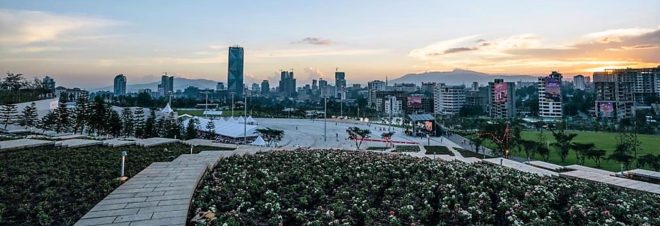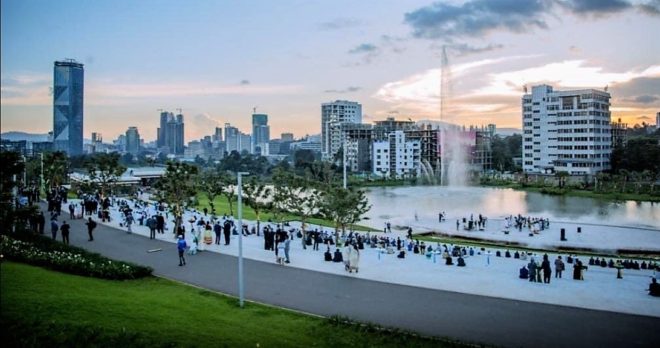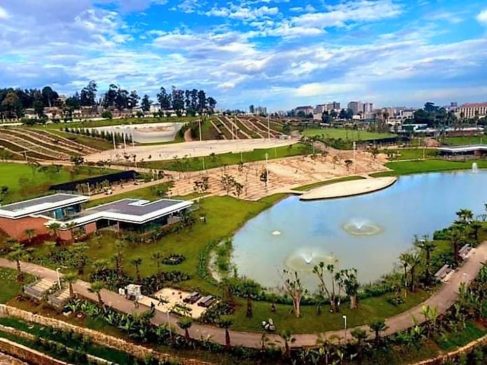Ethiopia: A Tourism Revival
 Addis Ababa, Ethiopia - Ethiopia is a unique destination in that it combines vast natural, historical, and cultural treasures all within one border.  It is the source of the Nile, land of the Queen of Sheba and the Axumite civilization, home of the Ark of the Covenant, the origin of mankind, one of the original centers of plant and animal domestication including coffee and teff, the medieval castles of Gondar, and home to the 8th wonder of the world, the rock hewn churches of Lalibela.  It also has an astonishing variety of landscapes, from rugged mountains to the rift valley lakes and their birds, to the Danakil Depression, which contain live lava lakes and geysers.  Unsurprisingly then, Ethiopia has the most number of World Heritage sites in Africa (9).  Yes, that means Ethiopia has more world heritage sites than Egypt and Tunisia.
Addis Ababa, Ethiopia - Ethiopia is a unique destination in that it combines vast natural, historical, and cultural treasures all within one border.  It is the source of the Nile, land of the Queen of Sheba and the Axumite civilization, home of the Ark of the Covenant, the origin of mankind, one of the original centers of plant and animal domestication including coffee and teff, the medieval castles of Gondar, and home to the 8th wonder of the world, the rock hewn churches of Lalibela.  It also has an astonishing variety of landscapes, from rugged mountains to the rift valley lakes and their birds, to the Danakil Depression, which contain live lava lakes and geysers.  Unsurprisingly then, Ethiopia has the most number of World Heritage sites in Africa (9).  Yes, that means Ethiopia has more world heritage sites than Egypt and Tunisia.
Unfortunately, all of these potentials remained just that until recently.  The revival of the Tourism sector appears to have started around 2004/05.  Official statistics show that tourist arrivals into Ethiopia increased from 184,078 in 2004 to 560,000 last year, a three-fold increase. The average length of stay of a typical tourist has increased to reach 7 days with average spending per day of $158.  Total travel and tourism spending reached an impressive $2.38 billion in 2011, out of which a growing domestic travel sector contributed a hefty $844 million.  Precise insights’ forecast is that tourist arrivals will reach 1.2 million in five years’ time (see table for details).
| Year | business | leisure | Transit | Conference | Visiting Relatives | Total |
| 2011 | 62,409 | 163,294 | 143,551 | 31,294 | 31,852 | 432,400 |
| 2012 | 67,554 | 192,682 | 176,241 | 39,365 | 34,312 | 510,154 |
| 2013 | 73,122 | 227,358 | 216,375 | 49,519 | 36,961 | 603,335 |
| 2014 | 79,150 | 268,275 | 265,649 | 62,292 | 39,815 | 715,181 |
| 2015 | 85,675 | 316,556 | 326,143 | 78,359 | 42,889 | 849,622 |
| 2016 | 92,737 | 373,525 | 400,414 | 98,571 | 46,201 | 1,011,448 |
| 2017 | 100,382 | 440,748 | 491,597 | 123,995 | 49,768 | 1,206,490 |
Source:  Precise Consult International, forecast using current Ministry of Culture & Tourism numbers.  Please note dates used here are based on the Gregorian calendar while MoCT reports using Ethiopian calendar.
We believe that we have only scratched the surface and the sector is likely to see further dramatic expansion.  Ethiopian tourism currently suffers from large infrastructure and services capacity limitation.  We expect to see many new investments over the next few years in hotels, lodges, travel agencies, local transport, international transport, food service and training services.  For instance, there is currently only 1 travel agency for every 1,516 tourists in Ethiopia.  Despite being the political capital of Africa, Addis Ababa only has 110 hotels with less than 5,500 rooms available and top tier hotels currently show occupancy rates in excess of 90%.  Even worse, the rest of the nation, where most of Ethiopia’s attractions are located, hosts a grand total of 350 hotels, less than 9000 rooms.
Drivers of demand for this sector will continue to be the still underexplored tourism assets in the country, the growing importance of Addis Ababa as the political capital of Africa, fast growing economy and FDI.  With Africa’s fastest growing airline, Ethiopian airlines, aiming to become the continent’s largest airline by 2025, and a fast improving infrastructure development within the country, the improving connections will also mean expanded opportunities.
Source: Precise Consult InternationalÂÂ



